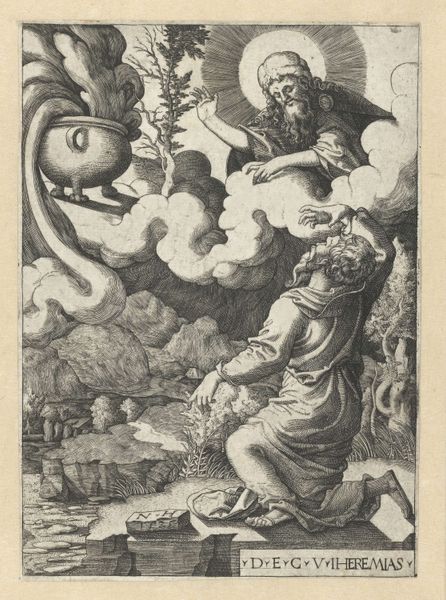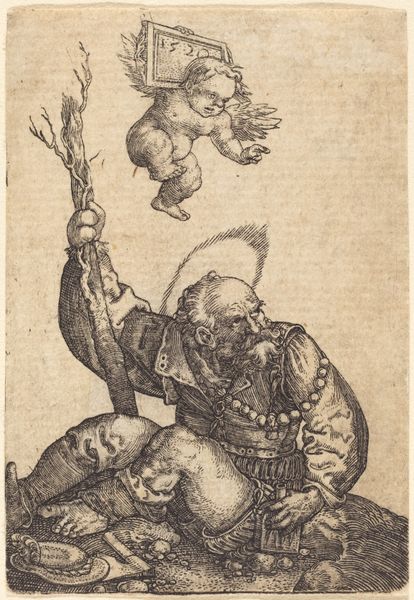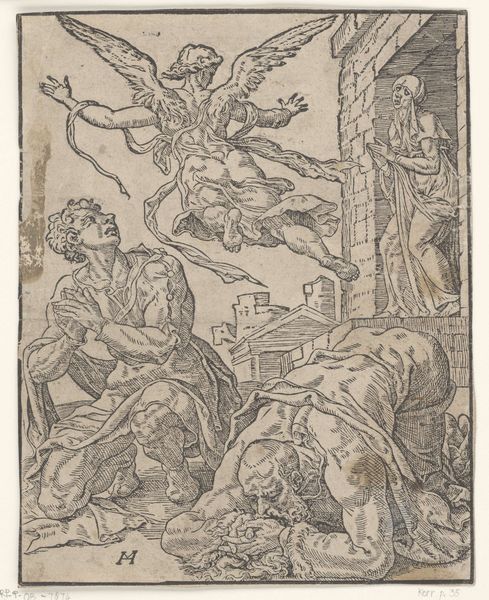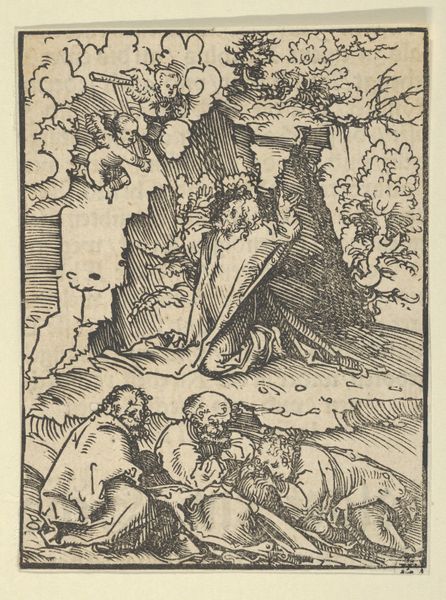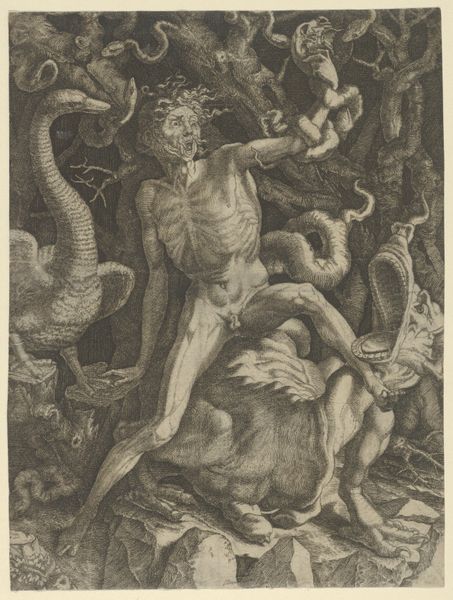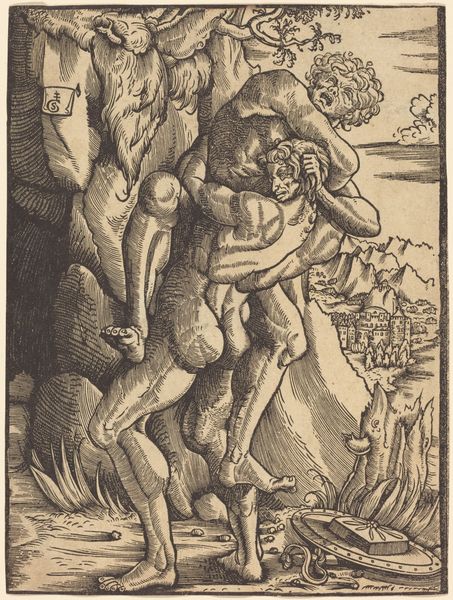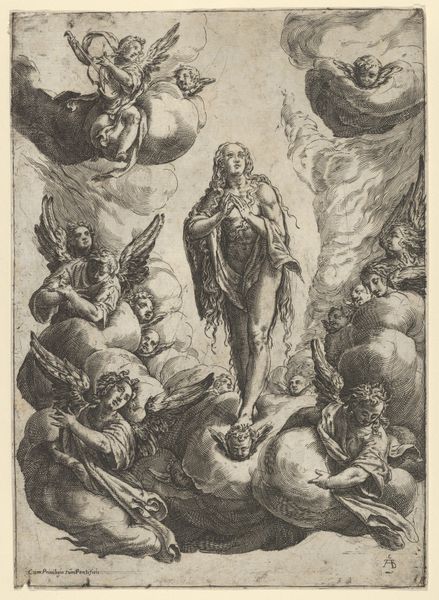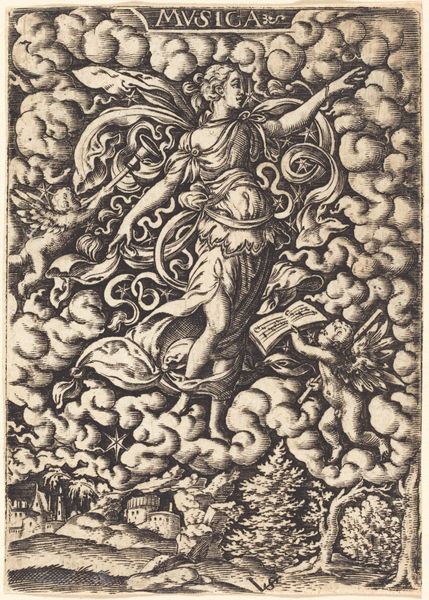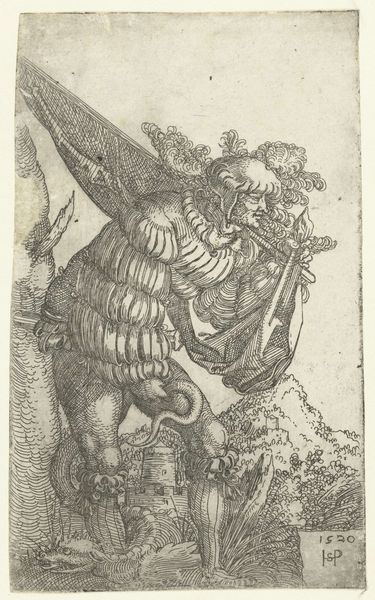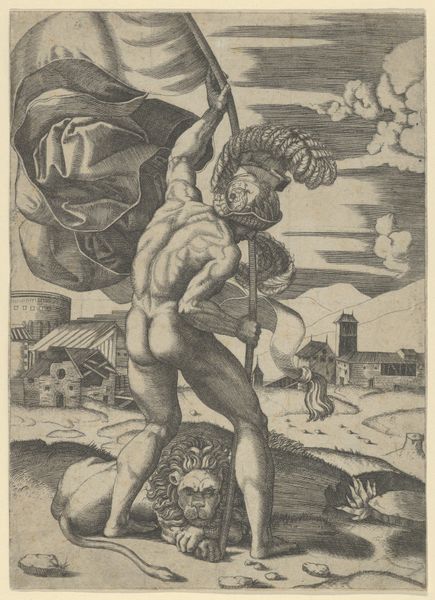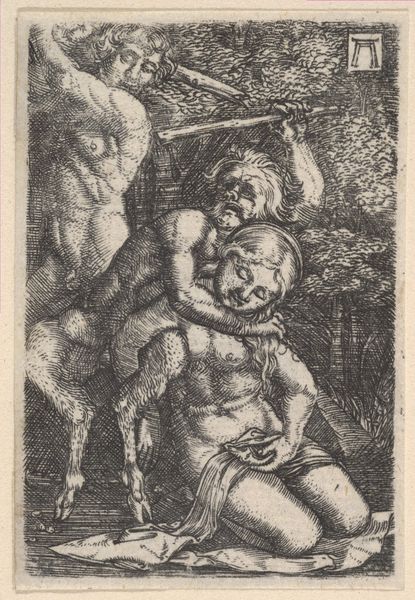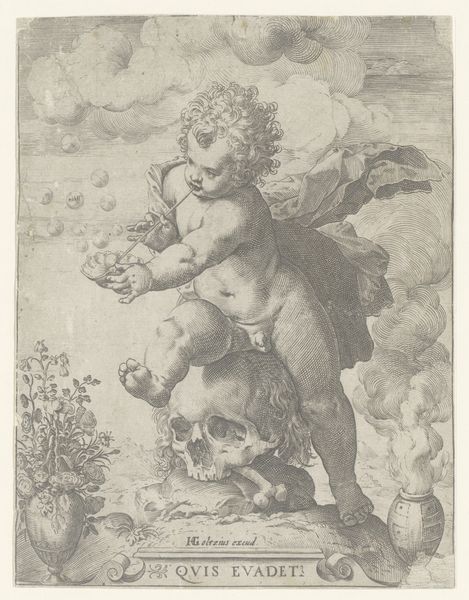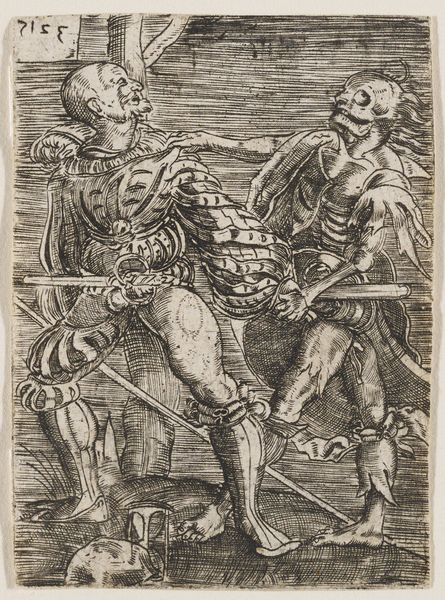
print, engraving
#
pen drawing
# print
#
figuration
#
11_renaissance
#
northern-renaissance
#
engraving
Dimensions: sheet (trimmed to image): 6.8 × 4.8 cm (2 11/16 × 1 7/8 in.)
Copyright: National Gallery of Art: CC0 1.0
Curator: This engraving, "Saint Christopher," was created by Barthel Beham in 1520. The detail achieved with this medium is quite astounding. What are your initial thoughts? Editor: There's an unsettling vulnerability here. He's huge, but not powerful. The date hovering on the cherubic figure... it feels like a heavy weight on both of them. Curator: The image definitely inverts expectations of how we see such saints. In traditional iconography, Christopher is, yes, the giant, but more importantly, the protector, courageously ferrying the Christ child across the river. But Beham captures a moment of, well, burden. Even discomfort. Editor: Perhaps it reflects the societal anxieties of the time. The Reformation was in full swing; traditional authority was collapsing. We see this saint weary, almost questioning his role. His feet are bare, vulnerable, placed awkwardly over what appears to be discarded shoes or sandals. What does that signify? Curator: Ah, those discarded sandals are indeed part of the narrative! Symbolically, they show the renunciation of earthly concerns to serve a divine purpose. Though you're right; the emotional charge certainly is more melancholic than triumphant. Beham uses shadow so effectively to give the composition weight. And that figure above carries the "1520," an unusual symbol of temporality, underscoring the saint's temporal presence, too, no? Editor: Absolutely. And the year acts as almost a thought bubble – suggesting it's a creation OF that time rather than portraying a time past. Given the rise of humanism, this could represent the shift in focus to the human experience even within religious contexts. Are we meant to ponder his specific moment in time, not just the myth? Curator: It suggests an introspection that’s unique. Here, Saint Christopher is not merely a figure of faith but an individual facing the uncertainties of his own era, something with resonance across generations. The symbolic visual tension created by this reading becomes incredibly interesting. Editor: Yes, even today we can see ourselves reflected in this figure wrestling with his responsibilities amid larger societal shifts. Curator: A poignant interpretation, underscoring how even ostensibly "devotional" artworks can act as compelling cultural mirrors. Editor: A testament to the lasting power of symbolic subversion and that unique talent for Northern Renaissance art.
Comments
No comments
Be the first to comment and join the conversation on the ultimate creative platform.
